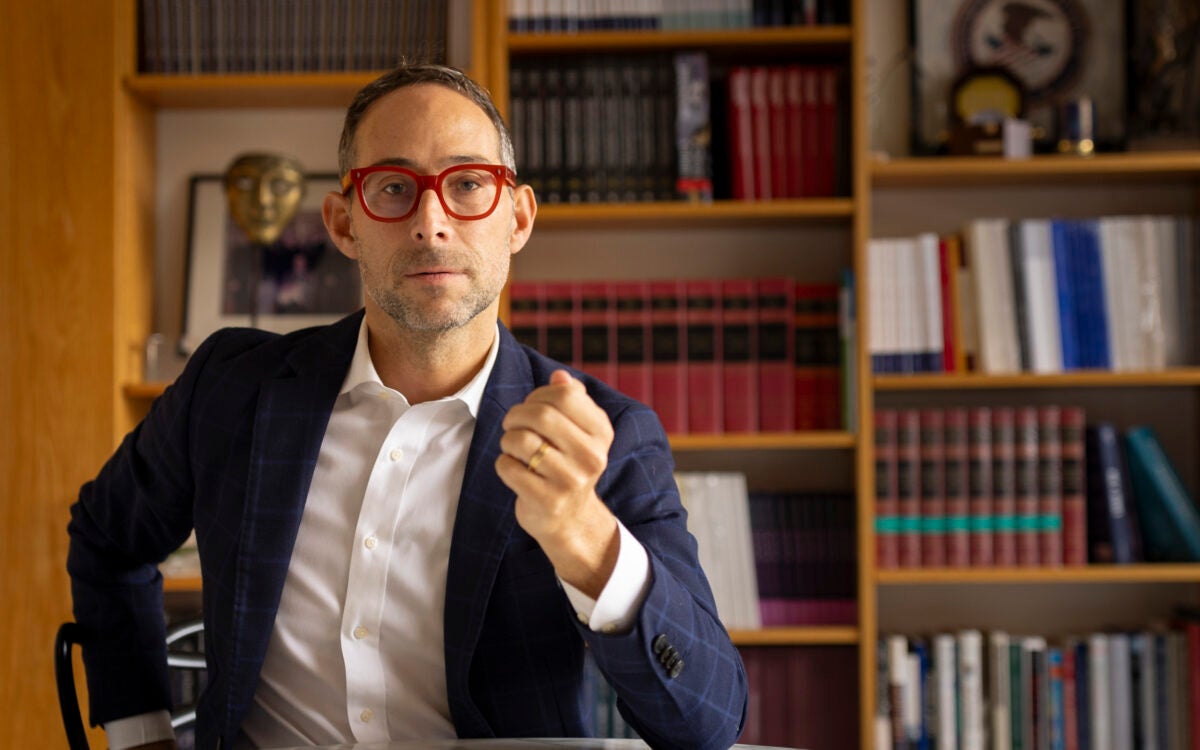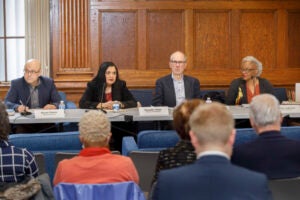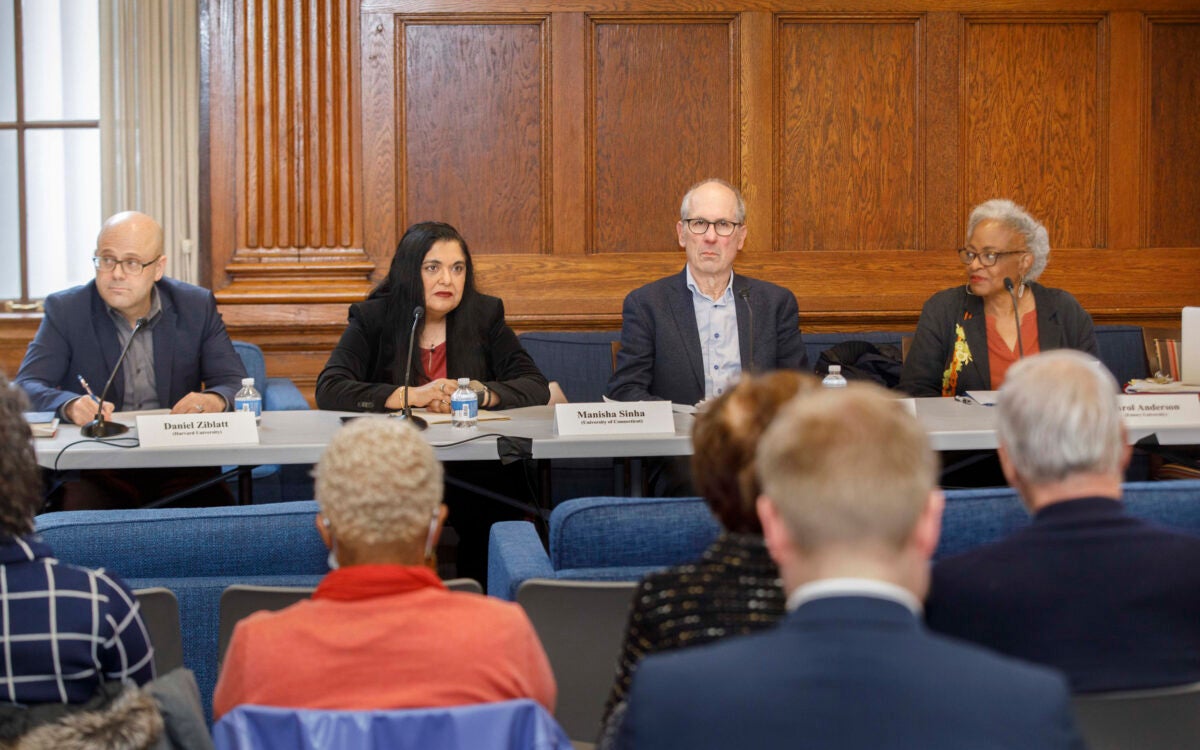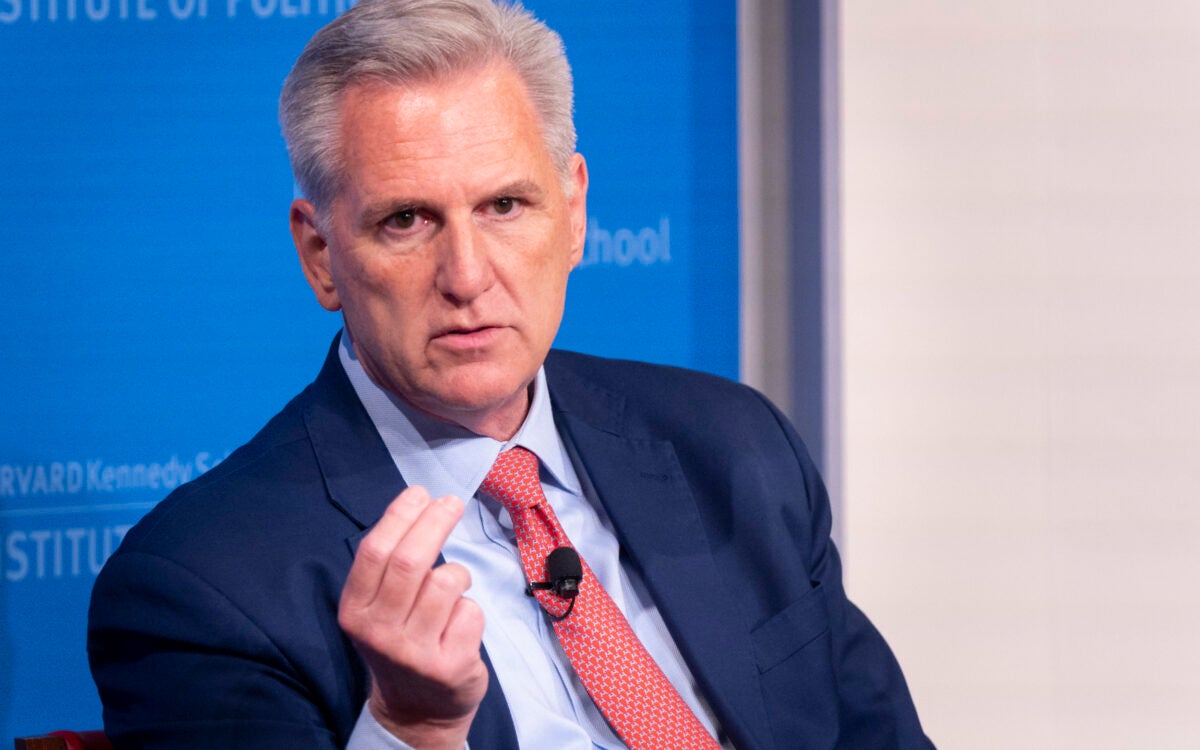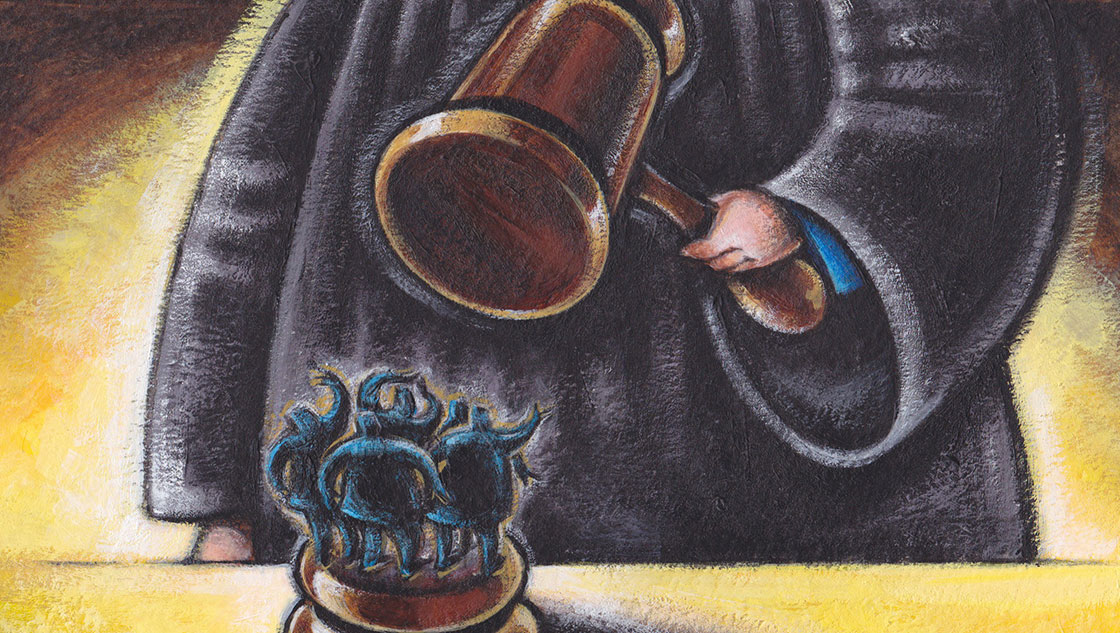
The costs of inequality: A goal of justice, a reality of unfairness
Current system produces huge prison population, lengthy sentences, but little proof of deterrence
Fifth in a series on what Harvard scholars are doing to identify and understand inequality, in seeking solutions to one of America’s most vexing problems.
When starting a semester, Harvard Law School (HLS) Professor Carol Steiker likes to ask her first-year criminal law students to describe what they think are the biggest societal changes of the past 40 years. The students often cite the rise of social media, or global warming, or same-sex marriage.
Then it’s Steiker’s turn. “I show them the statistics,” said Steiker, the School’s Henry J. Friendly Professor of Law, “and they are stunned.”
Her numbers show mass incarceration in the United States. Beginning in the 1970s, the prison population began swelling, climbing steadily through 2009. Now, this nation imprisons more of its residents, 2.2 million, than any other. The United States jails a quarter of the world’s prisoners, although it contains only 5 percent of the world’s population. The statistics are sobering for a republic that celebrates justice, fairness, and equality as the granite pillars of its democracy.
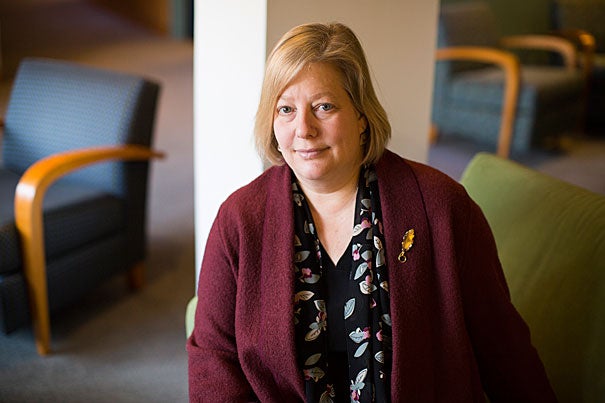
America’s prison system produces other stark numbers. “You just look at our prisons and jails,” said Steiker, “and they are overwhelmingly filled with poor people and people of color.”
Some analysts call that sky-high incarceration rate this era’s Civil Rights issue, and say the justice system warehouses inmates, damages families, and hollows communities. The system must be repaired, they argue, if everyday life is to reflect the nation’s aspirational core values.
According to Bruce Western, Harvard sociology professor and the Daniel and Florence Guggenheim Professor of Criminal Justice Policy, about two-thirds of African-American men with low levels of schooling will go to prison during their lifetimes. Most inmates are minority men under age 40 “whose economic opportunities have suffered the most over the last 30 or 40 years. Incarceration in the United States is socially concentrated among very disadvantaged people.”
In addition, the Internet age, a boon in so many ways, can make life worse for former inmates, since a person’s criminal record is often accessible now with the click of a mouse. “And so as marginalizing as the experience of incarceration used to be,” said Western, “it’s even more so now.”
The U.S. imprisons more of its residents, 2.2 million people, than any other country in the world. Almost a quarter of the world’s prisoners are held in American prisons.
The roots of America’s mass-incarceration policies are tangled in history, politics, social conflict, and inequality. It’s a pretzel-logic labyrinth, and to solve it or even simplify it, analysts say, will require sweeping, head-on reforms.
One overarching way to reduce America’s urban crime problem would be to chip away at its root causes, analysts say, starting with helping the millions of Americans overwhelmed and made desperate by poverty. It’s a simple but often forgotten fact that people without education, jobs, housing, or hope commit most crimes. Harvard scholars say that a broad-brush campaign to target crime would include effective social services, early education initiatives, access to health care and mental health services, and more housing and job opportunities.
“Before anybody’s had contact with law enforcement, they’ve had contact with schools, with jobs, either getting them or not, with the health care system and the housing systems, all of which suffer from many of the same and sometimes even worse forms of bias than does law enforcement,” said Phillip Atiba Goff, a visiting scholar at the Harvard Kennedy School (HKS) who leads an effort to collect nationwide data on police behavior.
“What we are frequently picking up on is not the prejudice or discrimination by law enforcement, but rather the symptoms of a society that is still sickened and toxified by the prejudices and discrimination of our current society, and from generations past.”
The criminal justice system
When it comes to the criminal justice system, analysts say that reducing inequality significantly would require an overhaul of the nation’s sentencing system, better diversion and prevention programs, prison reforms, more effective policing policies and training, and comprehensive support for former prisoners trying to mold stable lives.
In recent decades, historians and experts say, national crime policies have veered toward harsher punishments, but not more effective ones.
Some analysts trace the soaring spike in the nation’s prison population to President Ronald Reagan’s expansion of the war on drugs. But others say it began earlier. Elizabeth Hinton, an assistant professor of African and African-American studies at Harvard, argues that the administration of President Lyndon Johnson, a champion of civil rights, set the stage for expanded incarceration.
Johnson’s progressive social policies never had the staying power of his anti-crime programs, Hinton said, such as initiatives that gave surplus military weapons to police departments. That equipment, plus federal funds for law enforcement, helped lead to increased surveillance and incarceration, she said.
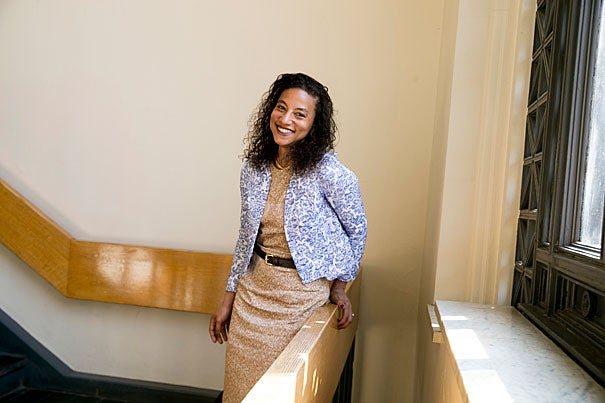
“Ronald Reagan and subsequent administrations stepped into a bureaucracy and a crime-control infrastructure that was created and directed by the Lyndon Johnson administration,” said Hinton, whose upcoming book will examine the connections between the rise of America’s “carceral state” and Johnson’s anti-poverty programs.
“The prison population spike that we see in the ’80s was made possible by these earlier policies, and the ways in which crime-control programs and social welfare programs end up becoming entangled.”
Prior to that period, many federal programs had emphasized crime prevention. Johnson and President John Kennedy, for instance, had backed building urban recreational facilities to bring residents together with social workers, police, and probation officers, while avoiding stigmatizing neighborhood teens as delinquents. But those early efforts eventually backfired, Hinton said, casting “low-income youth — whose families are on welfare, who live in public housing projects, who attend urban public schools, and who have family members with arrest records — as potentially delinquent.”
When the programs, which had been run by social workers, were gradually defunded, the police took on administering what was left of them. That shift gave officers “more and more opportunities to supervise a population they saw as troublesome,” said Hinton. By President Jimmy Carter’s administration, Hinton said, the social welfare programs had almost entirely “vanished from the urban landscape,” replaced by services involving “police officers and law enforcement institutions.”
Achieving neither
The increasingly crime-conscious 1980s brought a wave of legislation aimed at making sentencing fairer and streets safer, but which succeeded, many critics argue, at achieving neither.
The Sentencing Reform Act of 1984, part of the Comprehensive Crime Control Act, enacted a sweeping revision of the criminal code. The legislation established the U.S. Sentencing Commission and tasked it with providing guidelines to federal courts — a radical shift in policy, since judges previously had wide discretion in sentencing. The commission introduced mandatory sentencing for various crimes and eliminated federal parole for some cases, immediately boosting prison rolls.
About two-thirds of African-American men with low levels of schooling will go to prison in their lifetime.
Instead of improving fairness in sentencing, as was intended, the new system wound up promoting inequality, says HLS lecturer Nancy Gertner, herself a former federal judge. Judges suddenly had to hand down standard sentences to those convicted of some specified crimes who had particular criminal histories.
“You couldn’t focus on their mental state, you couldn’t focus on family background, you couldn’t focus on drug addiction, you couldn’t focus on all the things that had been terribly important previously, and should have been important,” she said.
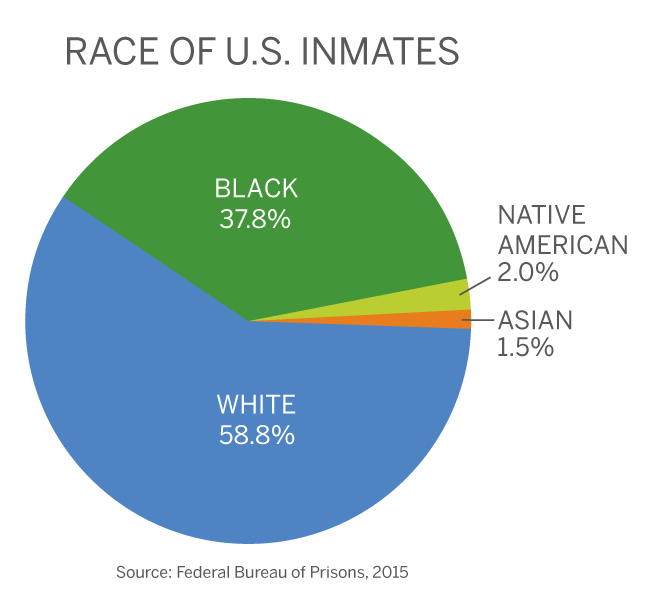
The Reagan administration’s crackdown on drugs also drove up the incarceration rate and helped lock in a disparity in the expanding prison population, she said. Many analysts connected the rise in crime to the rise in use of cocaine, including the crystal form known as crack that was popular in minority communities. Reagan’s Anti-Drug Abuse Act of 1986 ushered in mandatory sentencing rules for drug crimes. But the new mandates were inherently unequal. An offender would need to have 100 grams of powdered cocaine to receive the same sentence as someone possessing one gram of crack.
“The same substance that was being used in the white community was being punished much less harshly than the substance that’s being used in the black community,” said Gertner. “That set the tone for an extraordinary racial disparity baked into this structure.”
Sentences grew stiffer, but analysts agree they never led to a significant drop in crime. The crime rate, an analysis shows, began dropping before the number of prisoners skyrocketed. Most telling, the rate also dropped in places without punitive policies.
Western, who is also director of the Malcolm Wiener Center for Social Policy, has been studying prison populations for years. Just as striking as the scale of the American penal system, he says, is its lopsided distribution across the population. Those jailed are overwhelmingly minority men, often African-Americans with little schooling. According to Western, one in eight African-American men born just after World War II who didn’t go to college spent time in prison. For those born in the late 1970s, the statistics are worse, with 36 percent going to prison. If they had dropped out of high school, the percentage jumped to 70.
“The expansion of the criminal justice system was a response not just to the problem of crime, but to a whole array of social problems associated with the uniquely harsh conditions of American poverty,” said Western, “and the communities that were dealing with those social problems were disproportionately minority.”

Those everyday problems — including unstable housing, slim job prospects, and inferior health care — are often waiting just outside the prison walls for inmates returning to society.
Western is now analyzing data from a study in which he tracked the lives of 122 men and women who left prison and moved back to their Boston neighborhoods. He said the study’s most striking finding was that most who leave prison go straight back to poverty. In addition, many have lives “surrounded by a cloud of violence.”
“In many cases they were victims of violence, they were witnesses to violence. And certainly as they got older, they were violent offenders as well.”
Another key finding, said Western, was the high number of former inmates who have mental illness or addiction issues. The research recommended installing robust community-based programs and services to ease ex-prisoners’ transitions and dissuade their return to crime.
Not surprisingly, analysts say that stable employment is one of the best predictors of former inmates’ success, yet getting jobs can prove quite difficult with a criminal record. Studies have found that wary employers routinely discriminate against job applicants who have been imprisoned.
Former inmates need not apply
In 2001 and 2004, Devah Pager, a Harvard professor of sociology and public policy, hired young men to pose as job applicants in New York City and Milwaukee. She gave the participants fake backstories and identical levels of schooling and work histories. But she also instructed subjects from each team to tell potential employers that they had been convicted of drug felonies and had spent 18 months in prison.
“No surprise, a criminal record had a huge impact on their hiring outcomes,” said Pager. “The applicants with criminal records received about half as many callbacks or job offers, relative to equally qualified applicants who had no criminal background.”
In addition, a former inmate’s race played an outsized role in the hiring process.
“The criminal justice system really casts a shadow over all black men and strengthens that association between blackness and criminality in a way that affects the entire black population, especially the entire black male population.”
Devah Pager
African-American participants paid bigger penalties for having criminal records than whites did, receiving fewer interviews and offers. Most unsettling, a black applicant with a clear record fared no better than a white applicant just released from prison.
Pager said her findings suggest that “being black in America today is sort of like having a felony conviction in terms of how employers view these applicants … The criminal justice system really casts a shadow over all black men and strengthens that association between blackness and criminality in a way that affects the entire black population, especially the entire black male population.”
Pager’s more recent research looks at how people with criminal records perform in the military. The results indicate that former inmates actually tend to advance more quickly and receive more promotions than other enlistees.
“Employers are reluctant to hire ex-offenders because they fear individuals with criminal records may perform badly or cause harm in the workplace,” said Pager. “Unfortunately, there is no existing evidence with which to evaluate these concerns. We look to the military as a test case, as America’s largest employer. The fact that ex-offenders perform as well, if not better, than their counterparts without criminal records suggests that employers’ concerns may be exaggerated.
“I take that to be a really encouraging sign,” she added. “With appropriate screening, these are individuals who perform very well on the job.”
The problem of young offenders
The penal system can prove particularly damaging to youthful offenders. Researchers say that judicial officials who punish teens and even those in their early 20s as adults are turning their backs on the proven science of brain development and the rehabilitation options available in juvenile courts.
“Most people who have a felony career start before they are 25, and most people, thankfully, age out at 25,” said Vinny Schiraldi, senior research fellow at the HKS Program in Criminal Justice Policy and Management and former commissioner of the New York City Department of Probation. “So if we can get you past 25 without having a felony conviction, the chances of you ever having a felony conviction drop substantially.”
Schiraldi and Western support raising the age limit of juvenile courts to 21 or even 25, and they are using the latest neuroscience research to make their case. They cite work by Laurence Steinberg at Temple University, who has shown that the 18- to 25-year-old-brain isn’t fully mature. Teenagers and young adults are still developing reasoning and judgment, said Schiraldi.
“They are more impulsive, particularly in emotionally charged settings, less future-oriented, more peer-influenced, and are greater risk-takers. All of those things impact criminality. And so if you believe that we should have a juvenile system, which most people do, and you believe that young adults are more similar to juveniles than to more fully mature adults, and they are, then it stands to reason that we should have more protections for them and a special approach.
“I think if done right,” added Schiraldi, “such systems, implemented nationally, could have a substantial impact on reducing mass incarceration and equalizing the playing field.”
“Most people who have a felony career start before they are 25, and most people, thankfully, age out at 25. So if we can get you past 25 without having a felony conviction, the chances of you ever having a felony conviction drop substantially.”
Vinny Schiraldi
Then there is the issue involving those who haven’t even begun prison sentences yet. Many thousands are consigned to local jails while awaiting trial or sentencing, or while serving short sentences. For many of them, posting bail is a challenge or even an impossibility.
“Someone’s inability to make bail or inability to pay a relatively modest fine or fee can spiral into years of incarceration, being jailed repeatedly, and having the fines and fees grow and grow,” said Steiker. “It can destroy people’s ability to work and to live their lives simply because they lack the funds to pay bail or a fine or a fee.”
In addition, court systems around the country increasingly are outsourcing their probation operations to private firms that make money by charging offenders extra fees.
“The private company may have little or no interest in achieving justice,” said Jacob Lipton, who leads Harvard’s Systemic Justice Project along with HLS Professor Jon Hanson.
Rising solitary confinement
In tandem with the incarceration rate, the use of solitary confinement in America has skyrocketed over the past two decades.
A recent report by the Bureau of Justice Statistics said that nearly 20 percent of state and federal prison inmates and 18 percent of local jail inmates have spent time in restrictive conditions, including disciplinary or administrative segregation or solitary confinement.
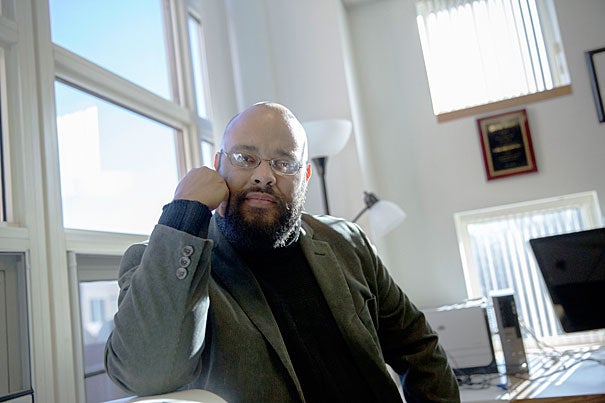
Research routinely shows that solitary can produce devastating psychological effects, including panic attacks, hallucinations, depression, mood swings, and even suicide. Solitary confinement “drives men mad,” U.S. Supreme Court Associate Justice Anthony Kennedy said during a visit to HLS last year during which he disparaged the criminal justice system for the practice, as well as for overcrowding and too-lengthy sentences.
Then there is the hot-button topic of police relations with minority communities. A number of civilian deaths during interactions with police in Ferguson, Mo., Staten Island, N.Y., Cleveland, and Baltimore have put the discussion about comprehensive policing reform in the national spotlight.
It’s a conversation, argues Goff, that is desperate for big data. Massive, complex computer studies in recent years have transformed business, science, and government. Some analysts think that big data could be a game-changer for police departments to increase their effectiveness.
“Right now, we are a single blind person feeling at the middle of the elephant, with no clue of where the edges are. That’s because we don’t have any national-level data on police behavior,” said Goff.
“The use of solitary confinement is a brutal aspect of American incarceration.”
Bruce Western
An associate professor of social psychology at the University of California, Los Angeles, Goff is co-founder of the Center for Policing Equity, a think tank that promotes police transparency and accountability. He helped to establish the first database with national statistics on police behavior. Currently working with 50 law enforcement agencies, Goff and his team are compiling information on police stops and the use of force. By comparing broad sets of information on police behavior, Goff and his researchers hope to identify and correct racial disparities in policing. He said that many police departments are eager for such information because they want to do a better job.
“They want it,” he said. “They are asking for it.”
Goff hopes that recommendations from President Obama’s Task Force on 21st Century Policing, created in the wake of Ferguson and other tragedies, will help. Important steps toward reform could include placing a limit on the minimum size of police departments, ensuring civilian oversight of policing, addressing implicit bias in police training, and adopting proportionality standards for the use of force.
“It’s not a proportionality standard that says, ‘I can use force proportional to what you use against me,’” said Goff, “but rather a standard that says, ‘I can use force proportional to the crime that you were suspected of committing in the first place.’ If you think about some of the recent incidents that have caused so much outrage, they have been in part because the consequence of the infraction was death, but the infraction was so minor: selling loose cigarettes, failing to signal, running away from law enforcement. None of these things should result in a death sentence.”
Goff supports using video cameras to tape police actions, and he said the momentum toward them seems inevitable. He sees video as a positive development that most police officers want. “Having gone on patrol with officers, I understand why. They are going to be better protected from crazy accusations that residents make.” But Goff cautions that body cameras also raise privacy concerns.
Some solutions, great and small
There are other proposed solutions, great and small, that could reduce judicial inequality.
Western proposes improving treatment programs and services for at-risk people. Breaking the pipeline to prison, he and other analysts say, would require early and continued social interventions, particularly deflecting future possible offenders from the path to crime when they’re young.
“People are often dealing in a sustained way with all sorts of problems that are largely beyond their control, that have to do with their home environments, their neighborhoods. Our data suggest we need to be thinking about interventions that are sustained through childhood, and measures that can help stabilize the home lives of at-risk kids in a sustained way,” Western said.
Support programs for addicts and the mentally ill also could curb the prison population, analysts say. Expanded “specialty treatment courts” could divert defendants into aid programs rather than warehousing incarceration.
For Pager, reform advocate Glenn Martin’s program to train ex-offenders to become political and social leaders in their own communities offers promise. That type of effort “puts a new face on who these individuals are,” she said, “and on what they are capable of, and what they are advocating for.”
“In drug court, the idea is to get drug offenders help and have them successfully complete a treatment plan rather than go to prison,” said Steiker. “The same thing is true for mental illness courts that attempt to deal with people whose crimes are the product of untreated illness. You establish a treatment plan and try to get them the services and support they need, rather than punishment. The idea is to take a therapeutic rehabilitative approach, rather than a punitive approach in the first instance.”
As an alternative to incarceration, Gertner pointed to programs like Roca, “rock” in Spanish, a Boston nonprofit that works with teens and young adults. Roca’s “cognitive-restructuring and skills-development intervention” and intensive outreach have helped move some young people away from violence and poverty, she said.
Possible solutions to judicial inequality
- End to mandatory sentences
- Juvenile courts open at least to age 21
- Equalized drug-case sentencing
- Bail that factors in circumstances
- Community service in lieu of jail
- Treatment rather than sentencing
- Post-prison job support
- Effective social services
- Medical and mental health care
- Reductions in poverty, hopelessness
“It’s an experimental period,” she said about being young, “and the notion is that we have to enable that experiment because the other experiment in mass incarceration was an abject failure.”
Some analysts say that the penal system should reconsider how it treats violent offenders, including re-examining life sentences. “We are going to have to talk about the kinds of sentences we give to people who commit violent crimes,” said Steiker. “Those sentences are vastly longer here in our country than they are, for example, in Europe, and that has to be on the table too.”
Interestingly, both major political parties have found rare common ground on some of these issues and are looking with fresh eyes at the burgeoning prison problem and the failure of long-held policies to reduce criminal behavior. Increasingly, officials are realizing that some policies are worsening the situation. So a movement toward change is taking hold.
In October, the Justice Department began releasing 6,000 inmates early, in keeping with the Sentencing Commission’s retroactive reduction of maximum sentences for drug offenders, announced in 2014. In his final State of the Union address in January, President Obama said, “I hope we can work together on bipartisan priorities like criminal justice reform.”
Many Democratic and Republican senators are backing a measure called the Sentencing Reform and Corrections Act that would soften federal sentencing guidelines. Supporters hope that the bill will reach the full Senate this year.
Hinton says that lessons from the past could help improve the future. For instance, allowing communities to have a voice in neighborhood programs, an early success in the war on poverty, could be weaved into policing today.
“I think part of the first step is really trusting people in low-income communities to devise ways to keep their communities safe,” Hinton said. “Everybody wants to live in a safe community, but there’s never been a moment where grassroots residents really had the power to do that, and were entrusted to do that by federal policymakers.
“And if we want to redefine the role of police in terms of providing educational and social welfare programs, there needs to be a whole new level of training and an entirely new incentive structure within departments,” Hinton said, “so that police are equipped to offer those kinds of services and are rewarded for their role in fostering social welfare as much as they are for meeting arrest quotas.”
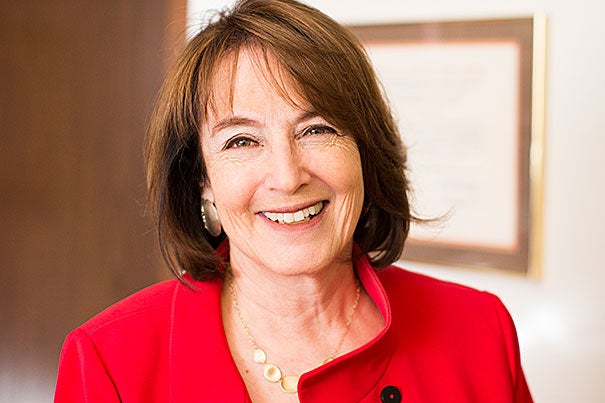
Softening rigid and unjust sentencing guidelines, Gertner says, would require a judicial overhaul. She favors eliminating mandatory minimums, restoring discretion in sentencing, and offering judges a robust menu of options from a list of evidence-based rehabilitative initiatives.
“The disparity concerns of 20 years ago were not illegitimate, but the way to deal with disparity in sentencing is by coming up with programs that we have validated and tested, programs that we have legitimized,” said Gertner. “Going forward, we have to look at things differently.”
Former inmates clearly need help establishing themselves as productive citizens, analysts say, and clues suggest what works there as well. For instance, most former Massachusetts inmates are immediately enrolled in MassHealth, said Western, since stable medical care is a key to successful re-entry. Implementing a similar effort nationally, perhaps through Medicaid, could play an important role in successful transitions.
Steady employment is also vital. Western cited studies showing that prisoners in low-security facilities who were allowed to work during the day often retained those work-release jobs after finishing their sentences.
“This continuity of employment and the savings provided by the work-release job are important for community return,” he said.
Informed screenings could help to change the hiring landscape, said Pager, by encouraging employers to heed U.S. Equal Employment Opportunity Commission guidelines. The commission asks that companies consider applicants with criminal records, and says that relevant factors in hiring include the time that has elapsed since a conviction, the evidence of rehabilitation, and the relationship between the crime and the open job.
The goal is to encourage employers to conduct “a whole-person review,” said Pager.
A better way on bail
On the issue of fair bail, analysts suggest better screening to determine whether someone can afford a fine before it’s imposed, and community service alternatives for those who don’t have money, said Lipton. The role of private probation companies also should be scrutinized and limited, he said.
“I think part of the first step is really trusting people in low-income communities to devise ways to keep their communities safe.”
Elizabeth Hinton
Some lawyers are challenging the constitutionality of jailing people simply because they can’t afford to pay fees. If a senior court ruled against the practice and required states to develop a better system, that decision could propel change, Lipton said. “But it remains to be seen whether there will actually be serious steps taken to reduce some of these penalties and reset the norms back down to somewhere that I would say is more reasonable,” Lipton said.
Western sees hope in reducing the mind-numbing practice of solitary confinement. Some correctional leaders have admitted “they need to re-examine the way in which solitary confinement is used in American prisons,” Western said. Obama recently announced a ban on solitary for juveniles in federal prisons.
“The use of solitary confinement is a brutal aspect of American incarceration. In Europe, severe isolation is used for hours at a time, but we use it for months and sometimes years,” said Western.
“But the pendulum may be swinging away.”
Illustration by Kathleen M.G. Howlett.
Next Tuesday: Gender-based inequality
